bond market vigilante
description: investors who sell bonds, driving up yields, as a protest against fiscal or monetary policies they consider inflationary
33 results
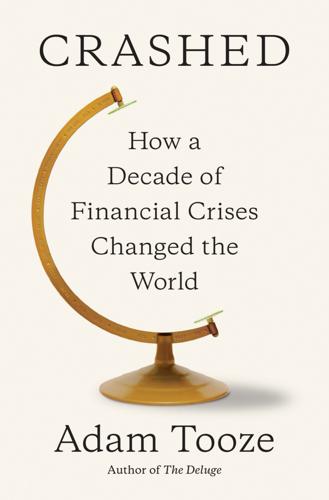
Crashed: How a Decade of Financial Crises Changed the World
by
Adam Tooze
Published 31 Jul 2018
But, as Neil Irwin later commented: “Britain . . . was embarking on something that has rarely been attempted . . . cutting spending and raising taxes in a preemptive strike against the risk of a future debt crisis.”15 As Paul Krugman remarked from New York: “It’s one thing to be intimidated by bond market vigilantes. It’s another to be intimidated by the fear that bond market vigilantes might show up one of these days.”16 As the squeeze continued, other motives revealed themselves. Shrinking the state, it turned out, was an aim in itself. The ultimate goal, as David Cameron would put it in his speech to the Lord Mayor’s Banquet three years later, was “something more profound”: to make the state “leaner . . . not just now, but permanently.”17 By 2015 Chancellor Osborne would claim to have slashed £98 billion in annual spending from the UK budget.
…
In 2007–2008 it had been the collapse in confidence in mortgage securitization, money markets and the banks that brought down the house and necessitated the bailouts. By 2009 confidence was still the problem. But now it was government deficits and the supposed threat of bond vigilantes that seized the headlines. Given actually prevailing conditions in bond markets at the time, the constraints this anxiety placed on fiscal policy were a triumph of precrisis centrist orthodoxy over the facts of the postcrisis situation. While the bond vigilantes never appeared, millons of jobless would pay the price for the failure to sustain fiscal stimulus. And the effects went beyond the labor market. The purpose of restraining fiscal policy was supposedly to maintain confidence and to create space for a private sector recovery.
…
Chief political adviser James Carville was left to ruminate: “I used to think if there was reincarnation, I wanted to come back as the president or the pope or a .400 baseball hitter. But now I want to come back as the bond market. You can intimidate everybody.”13 In the 1980s and 1990s, the so-called bond vigilantes had their day in the sun. Ten years later they were still in the market. Indeed, the bond funds were bigger than ever. But, as Obama had hinted, domestic investors were not what most worried the Rubinite crowd. Foreign investors were the key concern. The Bush administration’s deficits were financed overwhelmingly by bond buying from abroad.

Why We Can't Afford the Rich
by
Andrew Sayer
Published 6 Nov 2014
Thanks to John Allen for drawing this reference to my attention. 58 On how UK privatised train services are still heavily subsidised by the state, with much of the subsidy going to shareholders, see Bowman, A. et al (2013) ‘The conceit of enterprise: train operators and trade narrative’, http://www.cresc.ac.uk/sites/default/files/The%20Conceit%20of%20Enterprise.pdf. 59 Charles Rowley’s Blog, http://charlesrowley.wordpress.com/2012/05/10/bond-market-vigilantes-rule-across-the-eurozone/. 60 Hilferding, R. (2010) Finance capital, London: Routledge, ch 7, http://www.marxists.org/archive/hilferding/1910/finkap/ch07.htm. 61 In the US, the top 0.5%, who dominate bondholding, got half of all the interest payments by the Federal government going to households. See Canterbery (2000). 62 Stevenson, T. (2012) ‘Bond market vigilantes turn on Italy’, Telegraph, 12 November. 63 Time (1989) ‘Top 10 tax dodgers’. She was imprisoned for tax evasion. http://content.time.com/time/specials/packages/article/0,28804,1891335_1891333_1891317,00.html. 64 European Central Bank (2014) ‘Long-term interest rate statistics for EU Member States’, http://www.ecb.europa.eu/stats/money/long/html/index.en.html. 65 Wall Street Journal (2011) 30 September, http://online.wsj.com/article/SB10001424053111904332804576538363789127084.html. 66 Cited in Canterbery (2000). 67 Stevenson (2011). 68 Krugman, P. (2009) ‘Invisible bond vigilantes’, New York Times, 19 November 2009; see also Wolf, M. (2010), ‘Why the Balls critique is correct’, Financial Times, 2 September, http://www.ft.com/cms/s/0/119c59ac-b6c3-11df-b3dd-00144feabdc0.html. 69 Cited in Leyshon, A. and French, S. (2010) ‘“These f@#king guys” (1): the terrible waste of a good crisis’, Environment and Planning A, 42, pp 2549–59.
…
Indeed these were policies which the International Monetary Fund (IMF) and World Bank pushed as a condition of support for economies in trouble. When the debtor is in difficulty, the creditor can force the debtor to sell off their assets. This practice of dispossession has been going on for millennia. Bond markets: vigilantes, bogeymen and banks Thank Heaven for the bond markets. They protect us all from the in-built fiscal excesses of democratic politics. (Charles Rowley, Professor of Economics at George Mason University in the US)59 State bonds are nothing but the price of a share in the annual tax yield.
…
The 10-year rate on US Treasury bonds touched 8% in 1994. The consequent threat of a credit crunch in the business sector, and higher mortgage rates for prospective home buyers, generated enough political opposition to stop it going through Congress.65 Bondholders – sometimes dramatised as ‘bond market vigilantes’ – can simply bid up interest rates or refuse to lend anew. As James Carville, lead strategist for US President Bill Clinton famously commented, ‘I used to think that if there was reincarnation, I wanted to come back as the President or the Pope. But now I want to be the bond market: you can intimidate anyone.’66 Now, the same credit rating agencies that got things so wrong in rating credit derivatives mark down the credit ratings of countries that refuse to embrace austerity: in the euro-crisis, they drove the cost of borrowing for Greece, Ireland and Portugal, and then Italy, up to unsustainable levels, forcing their governments to think the unthinkable.67 On ‘Black Friday’ (13 January 2012), Standard and Poor’s downgraded the credit rating of nine European countries, prompting complaints that Europe’s future was being determined by American private credit rating agencies.

Shocks, Crises, and False Alarms: How to Assess True Macroeconomic Risk
by
Philipp Carlsson-Szlezak
and
Paul Swartz
Published 8 Jul 2024
Bond traders skeptical of fiscal profligacy—sometimes referred to as bond vigilantes—can sell government debt and push up interest rates when they perceive spending plans to be stoking inflation and eroding the value of long-term bonds they hold.6 By pushing up interest rates, bond vigilantes essentially neutralize the impact that stimulus has on the economy.7 Prominent in the 1970s and 1980s, the bond vigilantes—gradually—became a shrinking threat to politicians as structurally high inflation was conquered and reset to low levels. James Carville, President Bill Clinton’s strategist, still paid respect to the bond vigilantes in the early 1990s, famously stating he would want to be reincarnated as the bond market, because “you can intimidate everybody.”8 But as inflation waned, so did the intimidation.
…
Higher rates were driven by the cyclical and structural strength of the US economy and idiosyncratic financial drivers.10 To be clear, the veto power of bond vigilantes is a matter of degree, not kind. The context matters. For softer versions of bond-vigilante power, we don’t need to return to an era of a broken inflation regime like the 1970s and early 1980s. But the power of a market veto will still be strongly influenced by the strength of the inflation regime. Thus, the rejection of President Carter’s budget by the markets in 1980 occurred in the context of a regime of high and structural inflation. When the inflation regime is weak, the power of bond vigilantes will be strong. This points to the growing risk of markets offsetting stimulus in the future.
…
How these interact with the politics of stimulus will depend on the idiosyncratic circumstances in Washington at any given time. Market Offset: Return of the Bond Vigilantes? Even if the hurdles of willingness are cleared, stimulus still faces the constraints of ability. As already mentioned, markets can offset fiscal stimulus that is perceived as misguided, with higher interest rates and tighter financial conditions. The veto power of bond markets over fiscal stimulus has a long and proud history—so much so that it has inspired the respect of generations of politicians and policymakers. Bond traders skeptical of fiscal profligacy—sometimes referred to as bond vigilantes—can sell government debt and push up interest rates when they perceive spending plans to be stoking inflation and eroding the value of long-term bonds they hold.6 By pushing up interest rates, bond vigilantes essentially neutralize the impact that stimulus has on the economy.7 Prominent in the 1970s and 1980s, the bond vigilantes—gradually—became a shrinking threat to politicians as structurally high inflation was conquered and reset to low levels.

End This Depression Now!
by
Paul Krugman
Published 30 Apr 2012
Invisible Bond Vigilantes I used to think if there was reincarnation, I wanted to come back as the President or the Pope or a .400 baseball hitter. But now I want to come back as the bond market. You can intimidate everyone. —James Carville, Clinton campaign strategist Back in the 1980s the business economist Ed Yardeni coined the term “bond vigilantes” for investors who dump a country’s bonds—driving up its borrowing costs—when they lose confidence in its monetary and/or fiscal policies. Fear of budget deficits is driven mainly by fear of an attack by the bond vigilantes. And advocates of fiscal austerity, of sharp cuts in government spending even in the face of mass unemployment, often argue that we must do what they demand to satisfy the bond market.
…
And at every uptick in rates over that period, influential voices announced that the bond vigilantes had arrived, that America was about to find itself unable to keep on borrowing so much money. Yet each of those upticks was reversed, and at the beginning of 2012 U.S. borrowing costs were close to an all-time low. Source: Board of Governors of the Federal Reserve System The figure above shows U.S. ten-year interest rates since the beginning of 2007, along with supposed sightings of those elusive bond vigilantes. Here’s what the numbers on the chart refer to: 1. The Wall Street Journal runs an editorial titled “The Bond Vigilantes: The Disciplinarians of U.S.
…
As we’ll see, none of them is as deep in debt as Britain was for much of the twentieth century, or as Japan is now, yet they definitely are facing an attack from bond vigilantes. What’s the difference? The answer, which will need a lot more explanation, is that it matters enormously whether you borrow in your own currency or in someone else’s. Britain, America, and Japan all borrow in their respective currencies, the pound, the dollar, and the yen. Italy, Spain, Greece, and Ireland, by contrast, don’t even have their own currencies at this point, and their debts are in euros—which, it turns out, makes them highly vulnerable to panic attacks. Much more about that later. What about the Burden of Debt? Suppose that the bond vigilantes aren’t set to make an appearance and cause a crisis.
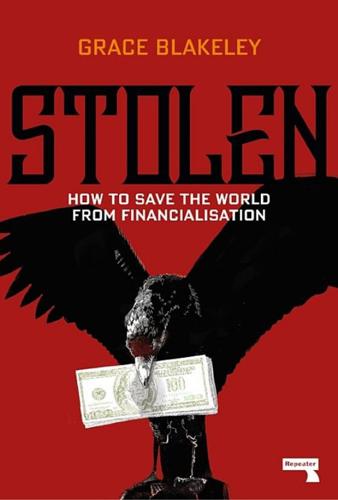
Stolen: How to Save the World From Financialisation
by
Grace Blakeley
Published 9 Sep 2019
They did what they always do: they claimed that they didn’t have a choice. The Bond Vigilantes In 1983, Edward Yardeni, an economist at a major US brokerage house, coined the term “bond vigilantes”.31 These vigilantes, Yardeni claimed, would “watch over” domestic governments’ policies to determine “whether they were good or bad for bond investors”. In other words, in the era of capital mobility, it was up to states to prove to investors that their country was worth investing in. If states were found wanting, the vigilantes would flee, pockets stuffed full of cash. Yardeni’s bond vigilantes are a personification of the logic of market discipline.
…
Neoliberal politicians were not terrified into submission by the bond vigilantes, they worked with these investors to rebuild the global economy in the interests of global capital, just as they had rebuilt their domestic economies along the same lines.33 The bond vigilantes provided cover. States would deregulate financial markets, making investors more powerful, thereby allowing governments to invoke the logic of market competition to justify their imposition of neoliberal policies on an unwilling populace. By the 1980s, the bond vigilantes had made it possible for politicians like Thatcher and Reagan to claim that there was no alternative to neoliberalism — any attempt at socialist experimentation would be severely punished by the markets, just look at Mitterrand’s France.
…
By the 1980s, the bond vigilantes had made it possible for politicians like Thatcher and Reagan to claim that there was no alternative to neoliberalism — any attempt at socialist experimentation would be severely punished by the markets, just look at Mitterrand’s France. Illiberal Technocracy The bond vigilantes supported a project that aimed to place fiscal policy outside of the realm of political debate. In the era of capital mobility, states would have no choice other than to do as the markets wished. But whilst it contained an element of truth, states that had control over their own monetary policy still retained much more power than this discourse suggests. The bond vigilantes knew that much more had to be done to place economics outside of the realm of politics. Developments in academic economics would provide the perfect justification.

The Default Line: The Inside Story of People, Banks and Entire Nations on the Edge
by
Faisal Islam
Published 28 Aug 2013
It was President Clinton’s adviser James Carville who mused that in a future life he’d want to return as a trader in government bonds. ‘You can intimidate everybody,’ he chuckled. The term ‘bond vigilante’ was coined by the US economist Ed Yardeni in 1983 to describe traders who would sell off the debt and demand higher yields (averaging 11 per cent) to compensate for the perceived risk of higher inflation and higher deficits in President Reagan’s America. The bond vigilantes were unleashed again on President Clinton, when in 1993 he introduced his wife’s plan for extra health-care spending (‘HillaryCare’), and ten-year US Treasury bond yields shot up to 8 per cent.
…
Harris, 2007 And for those born even later than that too, I dedicate this book to the incompetence of the generation of European political leaders born in the 50s and 60s Contents Cover Welcome Page Dedication Introduction Chapter 1 How the Euro Stole the Greek Sun Chapter 2 Of Fiscal Criminals and Bond Vigilantes Chapter 3 The Real Northern Rock Chapter 4 12/11: The Chinese Root Canals of Crisis Chapter 5 The House Trap Chapter 6 Three Funerals, Two Banking Systems and a Wedding Chapter 7 The Formula that Created the Shadow Banking System Chapter 8 The Gates of Hell Chapter 9 Mervyn’s Magic Money Machine Chapter 10 The Reluctant Imperium Chapter 11 Ground Control to Eurotower Chapter 12 The Great Carbon Wars Chapter 13 Lent in Larnaca: The Cypriot Job Epilogue New Default Lines Ten ideas to chew on Acknowledgements About this Book About the Author An Invitation from the Publisher Copyright Introduction Economics is not meteorology.
…
On a real fault line in San Francisco you will hear from the hippyish man who wrote the formula which was said to have broken Wall Street, but is still being used to define the safety of the Western banking system, and may well be holding the world economy back. There’s the Indian motorbike magnate who thinks climate change is principally a colonial ruse. There are the oil pipelines that threaten the fracture of a fragile nation. There is the constant dance and fight between fiscal criminals and bond vigilantes that has led to curious and patchy austerity. There is the desperate need for central bankers to communicate control in uncertain times. And then there are the migratory journeys within China that were a proximate cause of everything. In Cyprus, all the strands – bad banks, bad politicians and a dysfunctional Eurozone – coalesced into three weeks of high drama in March 2013.

The Corona Crash: How the Pandemic Will Change Capitalism
by
Grace Blakeley
Published 14 Oct 2020
Similar conclusions were drawn in the UK.8 In fact, ever since the ‘Greenspan put’ that followed the 1987 stock market crash, investors have counted on the fact that policymakers will hold interest rates down in the wake of a market crash.9 Central banks proved unable (some did not even try) to unwind the asset purchasing programmes implemented in response to the 2008 credit crunch. Part of the reason for the ongoing necessity of unorthodox monetary policy was the refusal of many governments – obsessed with the threat posed by the bond vigilantes and their maxims about ‘sustainable’ rates of borrowing – to use government spending to boost productivity and investment.10 But another, even more significant, factor was the sheer weakness of the global ‘recovery’ from the financial crisis itself. Global capitalism had become so sclerotic that policymakers were forced to prop it up with extremely loose monetary policy, which could only influence growth through the roundabout and unsustainable mechanism of artificially boosting lending and asset prices.
…
Much of its outstanding debt is owed to Chinese state-owned banks – as a relatively new large lender, it is unclear how China will respond to calls from Africa for debt restructuring. Meanwhile, on the other side of the South Atlantic, Argentina under left-wing Peronist president Alberto Fernández, elected in 2019, is undergoing its ninth sovereign default. Like other economies in the Global South, international institutions have allied with the bond vigilantes to bludgeon Argentina into imposing policies that benefit international investors and harm working people. The threat that the Fernandez government might impose restrictions on capital mobility was causing significant concern among investors even before the pandemic. They sought to discipline the struggling state into submission by selling Argentinian assets.
…
It is unlikely that either Argentina or Zambia will be able to escape the current crisis on its own. States in debt distress of this scale need cheap, long-term, unconditional lending to fund investment that can boost productivity and competitiveness. But the structure of the imperialist international system – built in the interests of the ‘bond vigilantes’ – militates against this.23 The Global South is now fighting a battle against nature on two fronts: not only tackling the spread of the coronavirus but also dealing with the effects of climate breakdown. The challenge these states face was made abundantly clear when Cyclone Amphan struck India and Bangladesh in May 2020.
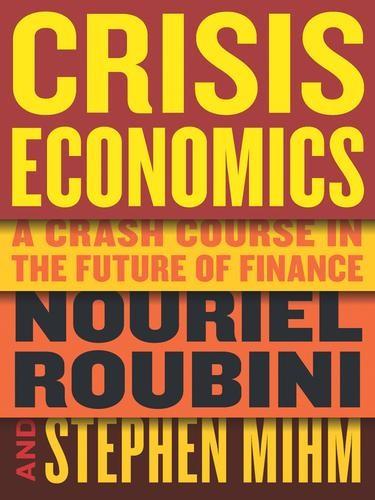
Crisis Economics: A Crash Course in the Future of Finance
by
Nouriel Roubini
and
Stephen Mihm
Published 10 May 2010
Unfortunately, while putting one’s fiscal house in order may play well with foreign investors, it could also sabotage a fledgling recovery. On the whole, however, these countries are better off taking the pain now rather than running the risk of defaulting on their debt. Though the United States and Japan will likely avoid the bond market vigilantes for some time to come, they too may one day incur their wrath. The United States continues to run unsustainable current account deficits and has an aging population and plenty of unfunded entitlement spending on Social Security and health care. Japan has an even bigger aging population and has already racked up significant debts.
…
In 2009 rating agencies downgraded the debt of several advanced countries, and debt auctions in the United Kingdom, Greece, Ireland, and Spain found far fewer buyers than anticipated. It was a less-than-friendly reminder that unless advanced economies start to put their fiscal houses in order, the rating agencies—and in particular, the dreaded “bond vigilantes”—will bring them to heel. That prospect puts many advanced economies in a bind. The recent crisis and the ensuing recession have led to a serious erosion in their fiscal position. Stimulus spending programs and lower tax revenues have hit hard. So has the decision to socialize the losses in the financial sector, effectively shifting them onto taxpayers’ backs.
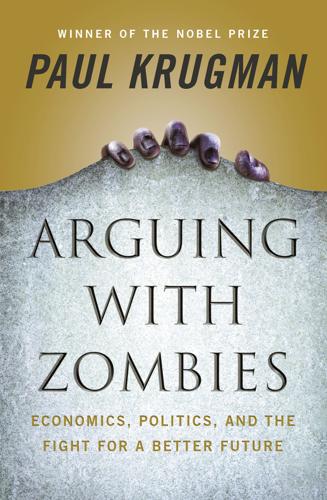
Arguing With Zombies: Economics, Politics, and the Fight for a Better Future
by
Paul Krugman
Published 28 Jan 2020
Instead, it rests on what we might charitably call sheer speculation, and less charitably call figments of the policy elite’s imagination—specifically, on belief in what I’ve come to think of as the invisible bond vigilante and the confidence fairy. Bond vigilantes are investors who pull the plug on governments they perceive as unable or unwilling to pay their debts. Now there’s no question that countries can suffer crises of confidence (see Greece, debt of). But what the advocates of austerity claim is that (a) the bond vigilantes are about to attack America, and (b) spending anything more on stimulus will set them off. What reason do we have to believe that any of this is true?
…
As Douglas Elmendorf, the director of the Congressional Budget Office, recently put it, “There is no intrinsic contradiction between providing additional fiscal stimulus today, while the unemployment rate is high and many factories and offices are underused, and imposing fiscal restraint several years from now, when output and employment will probably be close to their potential.” Nonetheless, every few months we’re told that the bond vigilantes have arrived, and we must impose austerity now now now to appease them. Three months ago, a slight uptick in long-term interest rates was greeted with near hysteria: “Debt Fears Send Rates Up,” was the headline at The Wall Street Journal, although there was no actual evidence of such fears, and Alan Greenspan pronounced the rise a “canary in the mine.”
…
Three months ago, a slight uptick in long-term interest rates was greeted with near hysteria: “Debt Fears Send Rates Up,” was the headline at The Wall Street Journal, although there was no actual evidence of such fears, and Alan Greenspan pronounced the rise a “canary in the mine.” Since then, long-term rates have plunged again. Far from fleeing U.S. government debt, investors evidently see it as their safest bet in a stumbling economy. Yet the advocates of austerity still assure us that bond vigilantes will attack any day now if we don’t slash spending immediately. But don’t worry: spending cuts may hurt, but the confidence fairy will take away the pain. “The idea that austerity measures could trigger stagnation is incorrect,” declared Jean-Claude Trichet, the president of the European Central Bank, in a recent interview.
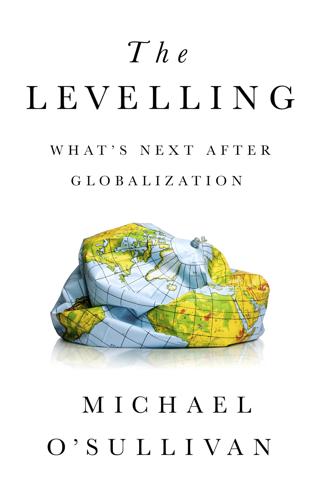
The Levelling: What’s Next After Globalization
by
Michael O’sullivan
Published 28 May 2019
Amromin, De Nardi, and Schulze, “Inequality and Recessions.” 18. B. M. Smith, The Equity Culture: The Story of the Global Stock Market (Farrar, Straus and Giroux, 2003), 5. 19. J. Carville, “The Bond Vigilantes,” Wall Street Journal, February 25, 1993, A1. 20. M. Fox, “‘Bond Vigilantes’ Are Saddled Up and Ready to Push Rates Higher, Says Economist Who Coined the Term,” February 9, 2018, US Markets, CNBC, https://www.cnbc.com/2018/02/09/bond-vigilantes-saddled-up-and-ready-to-make-a-comeback-ed-yardeni.html. 21. One such proposal comes from Mike Konczal and J. W. Mason of the Roosevelt Institute: Konczal and Mason, “A New Direction for the Federal Reserve: Expanding the Monetary Toolkit,” November 30, 2017, http://rooseveltinstitute.org/expanding-monetary-policy-toolkit/. 22.
…
Markets are important warning mechanisms, especially when it comes to bad economic policy. Famously, Bill Clinton’s political adviser James Carville said that if he were to be reincarnated, he would like to return as “the bond market” because it is so powerful.19 In the past, market strategists, such as Ed Yardeni, have spoken of “bond vigilantes,” referring to the fact that the bond market curbed excessive borrowing (and inflation) by governments by penalizing them for reckless borrowing with higher bond yields.20 A good example of the role bond markets play in signaling economic health is the information in bond yields across the eurozone countries.
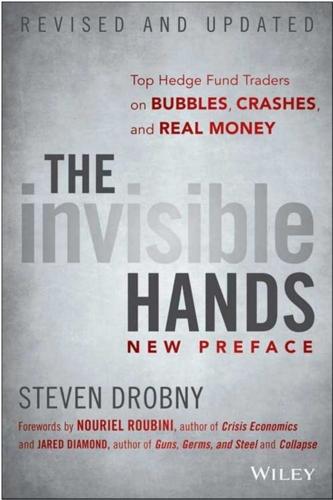
The Invisible Hands: Top Hedge Fund Traders on Bubbles, Crashes, and Real Money
by
Steven Drobny
Published 18 Mar 2010
Hyperinflations typically start when a fiscal deficit gets monetized, so the vigilantes are right to be alert to the dangers. But, the bond disaster story has to go through the path of better growth and a better outlook for some time. The process, even if the vigilantes are right, is likely to take a good deal longer than generally assumed. Bond Vigilantes Bond vigilante is a term given to bond market participants who, in reaction to inflationary monetary and fiscal policies, effectuate a “protest” in U.S. Treasury markets, pushing up yields. From the fall of 1993 to the fall of 1994, 10-year Treasury yields climbed from 5.2 percent to over 8.0 percent, in part because of concerns about the federal deficit.
…
And, for defending a view initially expressed back in April, when yields generally were 50 to 100 basis points lower. A very well played “away” game. Bravo! SOURCE : Drobny Global Monitor, October 30, 2009. What, then, happens if we have inflation or hyperinflation, as some are predicting? These are the new “bond vigilantes” (see box). They have a point, but you do not want to skip any steps here. The path to hyperinflation may well involve an initial period of healthy-looking recovery. It takes a long time for hyperinflation to take root. Things can look good for a while at first. Hyperinflations typically start when a fiscal deficit gets monetized, so the vigilantes are right to be alert to the dangers.
…
And the common attribute has been the decision to not allow their currency to rise, which funnels the resulting liquidity into rising asset prices, such as the stock market and real estate. This is the real quantitative easing, and over the past decade it sent oil from $10 a barrel to $150. Where were all the bond vigilantes then? Now that everyone has whipped themselves up into a frenzy of inflation paranoia, the moment may have passed. The desire for Americans to save more will reduce Asian surpluses and therefore the Asian money printing will abate. The interesting thing about today is that the renminbi is not rising; it has flat lined since the middle of 2008 just before everything fell apart (see Figure 13.11).
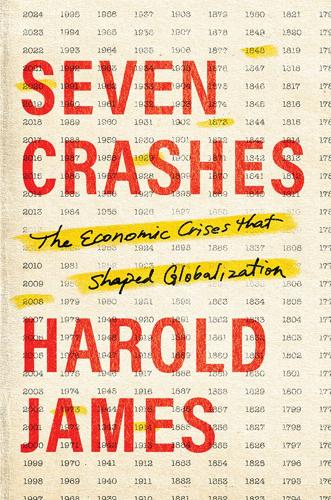
Seven Crashes: The Economic Crises That Shaped Globalization
by
Harold James
Published 15 Jan 2023
International Monetary Fund, World Economic Outlook, April 2009, xix. 26. John H. Allan, “Rates Haven’t Hit Bottom Yet,” Bond Buyer, March 1, 1993. 27. Jennifer Ablan, “Analysis: U.S. Treasury Bloodbath Soaks Top Fund Managers,” Reuters, June 5, 2009. 28. Liz Capo McCormick, “Bond Vigilantes Confront Obama as Housing Falters (Update3),” Bloomberg, May 29, 2009. 29. “The Bond Vigilantes,” Wall Street Journal, May 28, 2009. 30. “Obama Says U.S. Can’t Keep Borrowing from China,” Reuters, May 14, 2009. 31. Carmen M. Reinhart and Kenneth Rogoff, This Time Is Different: Eight Centuries of Financial Folly (Princeton: Princeton University Press, 2009). 32.
…
The causes of that reversal can be located in the psychology of financial markets, in the work of policy academics, in political maneuvers, in simple fatigue with both crisis and anticrisis measures, and finally in widespread frustration at the use of money in bank bailouts. The first explanation focuses on financial markets, with bond vigilantes as the major villains. Their mantra was a much-quoted phrase of James Carville, an adviser to Bill Clinton, who responded to a rapid spike in bond yields in 1993 –1994 with a quip: “I used to think that if there was reincarnation, I wanted to come back as the president or the pope or as a .400 baseball hitter.
…
On May 21, Moody’s Investors Service announced that it was “comfortable” with a AAA debt rating that would not be “guaranteed forever” against the backdrop of the United States’ deteriorating fiscal position, as a result of the need to borrow $2 trillion, or 14 percent of GDP.27 Edward Yardeni, who claimed to have coined the term “bond vigilante” in 1984, commented on the 2009 rise in Treasury yields, “Ten trillion dollars over the next 10 years is just an indication that Washington is really out of control and that there is no fiscal discipline whatsoever.” The investment manager and bond specialist Bill Gross claimed that “[t]here’s becoming an embedded inflationary premium in the bond market that wasn’t there six months ago.”
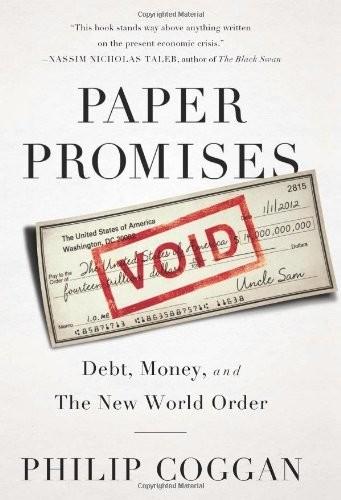
Paper Promises
by
Philip Coggan
Published 1 Dec 2011
Countries that ran large fiscal deficits needed to turn to the markets for their financing; those that combined fiscal deficits with trade deficits needed to rely on international investors. In theory, investors could punish irresponsible governments by pushing up interest rates. Indeed, that is what happened in the 1980s when real interest rates were very high, as investors reacted to their losses of the 1970s. The ‘bond market vigilantes’ would keep errant governments in line, and head off an inflationary rebound. By itself, this was a crucial difference from the Bretton Woods era. Capital controls meant that, until the late 1960s, the markets played a limited role in disciplining governments. Instead, the key role was played by trade.
…
And the rise of China (and other Asian nations) removed a further constraint. The inflationary burst in the 1970s caused a lot of pain for investors in government bonds; the nominal value of their holdings was repaid but the real value (purchasing power) deteriorated greatly. As they spotted this was happening, the bond market vigilantes mentioned in Chapter 6 naturally reacted by demanding a higher interest rate on bonds to compensate them for the risk. James Carville, an adviser to President Clinton, was astonished to find that his administration’s economic plans would have to take account of these vigilantes. ‘I used to think if there was reincarnation, I wanted to come back as the president or the pope or a .400 baseball hitter,’ he said.
…
This required them to sell their own currencies and buy dollars, which they held in the form of foreign-exchange reserves. Those reserves were invested in developed-world government bonds (mostly US Treasury bills). The system had thus created a very wealthy group of investors who were effectively uninterested in the price of, and return from, their investments. The bond-market vigilantes had been swamped. There was a savings glut that forced up asset prices. The result was an odd system that seemed to suit both sides. The Chinese had a flourishing export market; the Americans were able to fund their consumption at low cost. There were occasional grumbles. American politicians feared that the Chinese were stealing US manufacturing jobs; the Chinese occasionally lectured the Americans on the need to safeguard the value of the Treasury bond market.

The Deficit Myth: Modern Monetary Theory and the Birth of the People's Economy
by
Stephanie Kelton
Published 8 Jun 2020
That backstop reassures investors, who understand that the central bank has ironclad control over its short-term interest rate, along with substantial influence over rates on longer-dated securities.7 Greece gave up that backstop when it adopted the euro. It could literally run out of money, and everyone knew it. That’s why it couldn’t keep the bond vigilantes at bay. The term bond vigilantes refers to the power of financial markets (or, more accurately, investors in financial markets) to force sharp movements in the price of a financial asset like government bonds so that the interest rate swings unexpectedly. Ultimately, the European Central Bank did keep the vigilantes at bay, but not without helping to impose painful austerity on the Greek people.8 By 2010, many European countries, including Greece, were ensnared in a full-blown debt crisis.
…
Statistically, the federal funds futures market is where the most accurate predictions are made.) This gives central banks reasonably strong influence over long-term rates. To exercise even stronger control, central banks can effectively set rates across the yield curve, as Japan has done. 8. The term bond vigilantes refers to the power of financial markets (or, more accurately, investors in financial markets) to force sharp movements in the price of a financial asset like government bonds so that the interest rate swings unexpectedly. Ultimately, the European Central Bank did keep the vigilantes at bay, but not without imposing painful austerity on the Greek people.
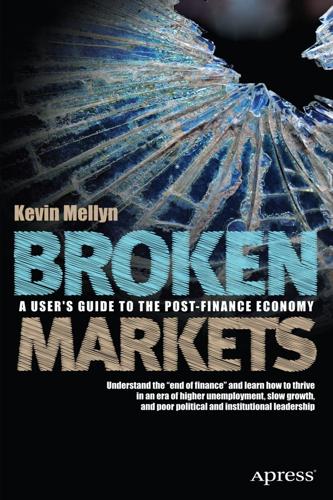
Broken Markets: A User's Guide to the Post-Finance Economy
by
Kevin Mellyn
Published 18 Jun 2012
Of course, there are limits to this neat trick of impoverishing the thrifty to feed the government and its dependents by reducing the value and income of savings. Inflation often breaks out suddenly with little or no warning, and can run unchecked as it did in the 1970s during the so-called Great Inflation that wiped out most of the value of American savings in a few years. Then, the so-called bond vigilantes simply refused to buy government debt on the terms offered. Eventually, Regulation Q, which capped interest rates, was abolished as savers abandoned the banking system, and the heroic actions of Paul 81 82 Chapter 4 | Life After Finance Volcker broke the back of inflation by inducing a deep and painful recession.
…
He did that by jacking rates up as high as 20 percent.When the smoke cleared, perhaps as much as 70 percent of the wealth of savers and investors had been liquidated. Right now, there are voices saying that a little more inflation would be a good thing for the economy, but perhaps because financial repression is firmly in place there is no sign of bond vigilantes riding to the rescue. This would all be bad enough, but the trajectory of public debt is pointing skyward in the developed world. Consider the McKinsey Global Institute analysis “Debt and Deleveraging: The Global Credit Bubble and Its Economic Consequences” (January 2010), as updated in 2011.

Capitalism 4.0: The Birth of a New Economy in the Aftermath of Crisis
by
Anatole Kaletsky
Published 22 Jun 2010
These double-dip recessions were also attributable to policy changes—generally big fiscal tightening not compensated by looser monetary policy. 2 The rate on long-term bonds is arguably even more important than the overnight rate, and many financiers believe this to be the central bankers’ Achilles heel. Bond rates, unlike short rates, are set by private investors in a competitive market. These investors are supposedly focused on the risks of inflation and government bankruptcy. They are often called “bond market vigilantes” because they can override the decisions of bureaucrats and take ultimate control over financial conditions. These issues are discussed further on pages 215-218 when we consider inflation and currency depreciation. In trying to work out who actually controls long-term interest rates, both theory and experience suggest that the overnight rate set by the central bank is more important than bond marker sentiment.
…
In trying to work out who actually controls long-term interest rates, both theory and experience suggest that the overnight rate set by the central bank is more important than bond marker sentiment. This was spectacularly confirmed in December 2008, when the Fed’s decision to print and push overnight rates down to zero was widely denounced as an inflationary debasement of the dollar, but Treasury bond yields, instead of rising as the bond-market vigilantes had expected, dropped almost immediately from 3.9 percent to 2.1 percent. For a remarkably frank admission by one of the world’s top monetary theorists of the astonishing confusion in academic economics about the respective roles of central banks and private investors in setting short-term and long-term rates, see Ben Friedman, “What We Still Don’t Know about Monetary and Fiscal Policy,” Brookings Papers on Economic Activity 2 (2007). 3 The exceptional size of the output gap is partly a result of unusually deep recessions in every major economy and partly due to the fact that these recessions occurred at the same time.
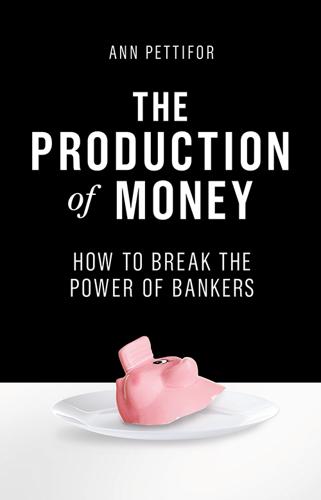
The Production of Money: How to Break the Power of Banks
by
Ann Pettifor
Published 27 Mar 2017
Western Europe’s return to prosperity was also achieved without capital account convertibility … In short, when we penetrate the fog of implausible assertions that surrounds the case for free capital mobility we realize that the idea and the ideology of free trade and its benefits … have been used to bamboozle us into celebrating the new world of trillions of dollars moving daily in a borderless world.12 Just as a well-managed banking system ends society’s dependence on robber barons at home, so should a well-developed and sound banking system end society’s and the economy’s reliance on international, mobile capital. With a managed domestic banking system, operated in the interests of both industry and labour, then government, industry and labour need not depend on, or fear, ‘bond vigilantes’ or ‘global capital markets’. Our society’s subjection to the predations of these markets is a tragedy entirely of our own making. We, or at least our elected representatives and public authorities, including central bankers, allowed the capital mobility genie to escape from the bottle of domestic regulation.
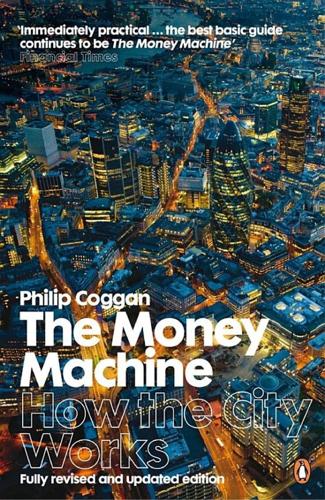
The Money Machine: How the City Works
by
Philip Coggan
Published 1 Jul 2009
Governments duly cut back, albeit with the help of some dodgy accounting tricks. This attention to deficits owes something to a general realization by politicians that running up debts on the never-never is a short-sighted strategy. Gradually, interest payments on previous debts consume an increasing proportion of the annual budget. And the rise of the so-called ‘bond market vigilantes’ has also made it more difficult for profligate governments. Countries have to raise money from the international markets and in these days of free capital flows, investors will be quick to sell the government bonds of a nation if it suspects its finances are deteriorating. That will increase the cost of raising new money and make the government’s finances even worse.

Financial Market Meltdown: Everything You Need to Know to Understand and Survive the Global Credit Crisis
by
Kevin Mellyn
Published 30 Sep 2009
The second creates inflation—too many dollars chasing too little stuff—which erodes the real value of the income received from the coupon. At some point, as happened in the United States during the 1970s, investors will stop buying ‘‘risk-free’’ government bonds. Bond investors hate to fund runaway government spending. This makes those so-called bond vigilantes, who keep a hawk’s eye on government spending and loose money, very powerful. Governments that can’t borrow except at crushing interest rates are in real trouble. Bond Yields If it is working well, the bond market sets all other interest rates. This means that for any ‘‘tenor’’—the length of time the government wants the money—what it is required to pay is a benchmark against which all other interest rates are pegged.
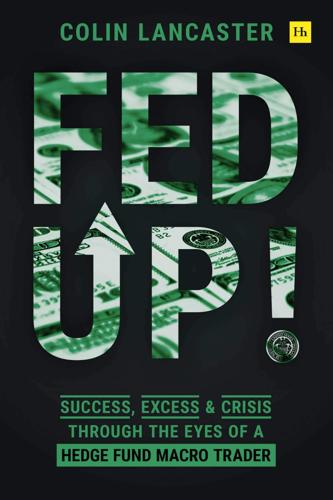
Fed Up!: Success, Excess and Crisis Through the Eyes of a Hedge Fund Macro Trader
by
Colin Lancaster
Published 3 May 2021
A wave of new debt will be hitting the markets shortly. Despite the extreme risk aversion and a historic repricing in stocks and credit, ten-year yields are climbing. Holy hell. This either means that risk parity funds are unwinding, or maybe, just maybe, folks are thinking about the fiscal dimensions of this mess. The last time the bond vigilantes had any relevance was eight years ago during the European crisis. This was when fiscal and budgetary concerns had a brief but disruptive day in the sun. They’ve since been relegated to the far stretches of the market discourse as heads of state promised and delivered more spending, central banks unleashed their alphabet soups of stimulus, and the world settled into this new-normal paradigm.
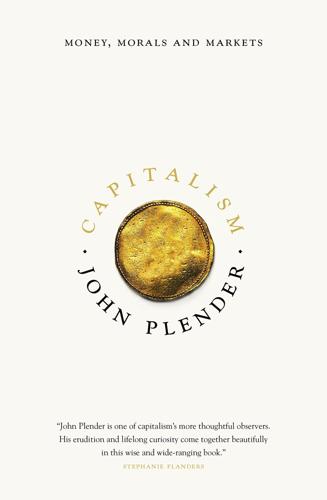
Capitalism: Money, Morals and Markets
by
John Plender
Published 27 Jul 2015
This, he says, would be counterproductive in modern (i.e., mid-eighteenth-century) times because it would be nullified by bankers’ foreign exchange operations and arbitrage – that is, bankers had learned to compare and assess a currency against competing currencies from around the world and could use bills of exchange rather than currency to finance trade. It is an excitingly modern thought in that Montesquieu anticipates twentieth-century public choice theory’s emphasis on the benefits of market constraints on self-serving politicians’ and bureaucrats’ freedom of action. It also looks forward to the activities of so-called bond market vigilantes, modern institutional investors such as pension funds, insurance companies and hedge funds that shun government debt markets and so force up interest rates when they fear policymakers will resort to inflation by printing money and monetising debt. Yet the underlying idea is still very much of its time in the conclusion Montesquieu draws from it relating to the workings of human passions and interests: ‘And it is fortunate for men to be in a situation in which, though their passions may prompt them to be wicked [méchants], they have nevertheless an interest in not being so.’
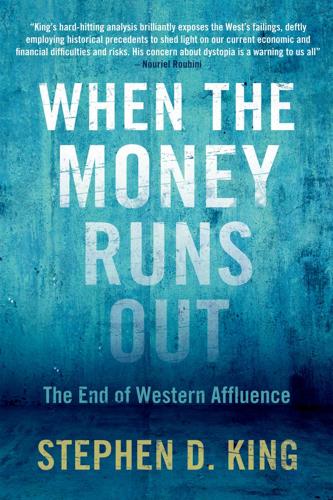
When the Money Runs Out: The End of Western Affluence
by
Stephen D. King
Published 17 Jun 2013
Wilful manipulation of government bond yields also means that the anchor for all asset values is slowly corroding. That surely means that capital will increasingly be at risk of being misallocated as a result of mispricing within financial markets, undermining long-term growth prospects. Most obviously, quantitative easing has allowed governments to avoid being penalized by the so-called bond market vigilantes. We have ended up with both incredibly low interest rates and incredibly large amounts of government debt. In the modern era, only Japan has previously managed to pull off that trick. Yet its economy has gone from one disappointment to the next. LIVING WITH POLICY PAINKILLERS LONG TERM As with Vicodin, excessive use of policy painkillers may eventually prove dangerously addictive.

The Age of Stagnation: Why Perpetual Growth Is Unattainable and the Global Economy Is in Peril
by
Satyajit Das
Published 9 Feb 2016
Current levels of government debt are only sustainable if growth returns quickly to high levels. Given that recent economic growth has been debt-fueled, reduction in credit growth slows economic activity, making the borrowings unsustainable, feeding a deadly negative-feedback loop. As the global economy stagnated, weak countries were targeted by bond vigilantes, making it difficult to finance and forcing up their financing costs. Nations were forced to implement austerity programs, cutting spending and increasing taxes to stabilize public finances and reduce debt, trapping them in recessions or low growth, which only aggravated the problems. With the basic strategy ineffective, the focus shifted to keeping interest rates near zero and creating inflation to increase nominal GDP, that is, unadjusted for price increases.

Rise of the Robots: Technology and the Threat of a Jobless Future
by
Martin Ford
Published 4 May 2015
Richburg, “Getting Chinese to Stop Saving and Start Spending Is a Hard Sell,” Washington Post, July 5, 2012, http://www.washingtonpost.com/world/asia_pacific/getting-chinese-to-stop-saving-and-start-spending-is-a-hard-sell/2012/07/04/gJQAc7P6OW_story_1.html, and “China’s Savings Rate World’s Highest,” China People’s Daily, November 30, 2012, http://english.people.com.cn/90778/8040481.html. 34. Mike Riddell, “China’s Investment/GDP Ratio Soars to a Totally Unsustainable 54.4%. Be Afraid,” Bond Vigilantes, January 14, 2014, http://www.bondvigilantes.com/blog/2014/01/24/chinas-investmentgdp-ratio-soars-to-a-totally-unsustainable-54–4-be-afraid/. 35. Dexter Robert, “Expect China Deposit Rate Liberalization Within Two Years, Says Central Bank Head,” Bloomberg Businessweek, March 11, 2014, http://www.businessweek.com/articles/2014–03–11/china-deposit-rate-liberalization-within-two-years-says-head-of-chinas-central-bank. 36.

Shutdown: How COVID Shook the World's Economy
by
Adam Tooze
Published 15 Nov 2021
With the vaccine campaign rolling out and a summer reopening in sight, the Treasury estimated that the UK’s total crisis spending would come to a massive 16 percent of GDP.31 When taxes rose, it would be corporations that would be hit first and hardest. And there was another key thing missing in 2020 from the austerity scenario: any talk of bond market panic. In 2010, against the backdrop of the Greek crisis, it had been easy to conjure up the specter of bond market vigilantes. In 2020, one might have thought that the outsize deficits and the knife-edge Brexit talks would have spooked financial markets, but nothing of the sort. The giant borrowing drive was flanked by an openhanded monetary policy courtesy of the Bank of England. The bank steadfastly denied that its pattern of bond purchases had anything to do with fiscal policy.
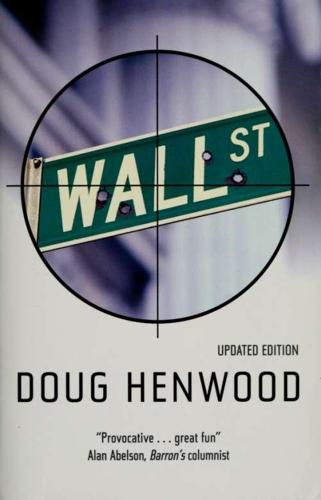
Wall Street: How It Works And for Whom
by
Doug Henwood
Published 30 Aug 1998
This story may be a plant, an attempt to calm the markets through leaking; Bradsher is a reporter who has had no trouble serving as a frictionless conduit for administration or Fed propaganda. But it does fit with events; challenging the Wall Street demand for slower growth would be political dynamite — just the kind of fight a not-feared-on-Wall-Street Democrat would shy away from. The bond-market vigilantes have won. Postscript. This book is being prepared for publication two-and-a-half years after that diary was written. Growth continued to be strong for the rest of ENSEMBLE 1994, consistently surprising Wall Street, which was touting an imminent slowdown, and the Fed tightened several more times. 1994 turned out to be the bond market's worst year in modern history, and perhaps ever; higher U.S. interest rates helped throw Mexico into crisis.

More: The 10,000-Year Rise of the World Economy
by
Philip Coggan
Published 6 Feb 2020
If capital was free to move, it could be invested in the most profitable opportunities around the world, and this would improve economic growth in the long term. Investors would also act as a source of discipline on spendthrift governments, demanding higher yields before lending them money. Politicians began to fear the “bond market vigilantes”. The asset management industry matured in this era. Fund managers look after the money of individuals and institutions, and offer the benefits of diversification. By pooling assets, they can spread their portfolios across a wide variety of securities and reduce the risk that any one investment goes wrong.
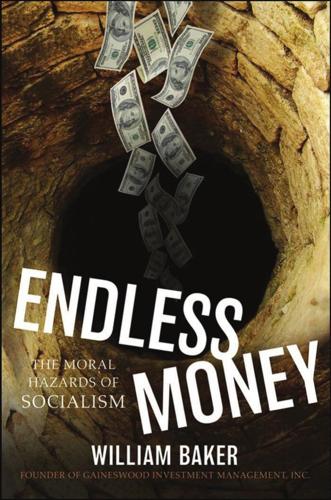
Endless Money: The Moral Hazards of Socialism
by
William Baker
and
Addison Wiggin
Published 2 Nov 2009
Although having DNA similar to pathogens seen in wartime debt buildups, this season’s strain encoded itself with the pattern of socialism: entitlements, bloated and intrusive government, and punitive taxation exclusively directed at the top brackets. Its vector of transmission is fiat currency. Our culture leaves the body politic and the investment community with no antibodies to recognize this threat. In earlier eras such as the 1980s, the bond vigilantes watched the money supply and government outlays closely. At the turn of the century, leading bankers looked over their shoulder for signs of the next wave of panic from others who might have lent speculatively, and they kept their balance sheets in good shape for that rainy day. Today, those who took defensive action through short selling or exchanging their money for commodities were instead pilloried in public hearings and damned for being speculators.

A Generation of Sociopaths: How the Baby Boomers Betrayed America
by
Bruce Cannon Gibney
Published 7 Mar 2017
That the bond market holds great power is no secret to either Wall Street or the Treasury Department, and shouldn’t be to politicians. After all, it is the bond market—the collection of all buyers, individuals, banks, other nations, etc.—that supplies money in the first place. When disappointed, “bond market vigilantes” have punished the Treasury market. James Carville, Bill Clinton’s chief political operative, found himself entirely surprised by the power of the bond market and once expressed a desire to be reincarnated not as the “president or the pope or a .400 baseball hitter… but as the bond market.”36 Vigilante justice is inflicted through higher interest rates, and this requires a quick refresher on bonds.

Never Let a Serious Crisis Go to Waste: How Neoliberalism Survived the Financial Meltdown
by
Philip Mirowski
Published 24 Jun 2013
As the Manchester CRESC group observed, “Leverage was the driving force behind the privatization of gains and the socialization of losses.”36 * * * Figure 6.2: European Public and Private Debt, 2000–2010 * * * * * * Source: Bank for International Settlements Alternatively, one might discern in its vaulting ambition the financial logic of the Structured Investment Vehicle used to hide crushing liabilities, only now being imposed on the state itself. In the meantime, as bond vigilantes conduct their attacks and government insolvency looms, states are forced by neoliberal parties and international agencies to engage in myriad forms of “austerity,” which include fire sales of viable legacy state assets and crude attempts to lower wages and renege on social insurance schemes. Indeed, this narrative that the crisis is all the fault of the government conforms so faithfully to the standard neoliberal script, trumpeted relentlessly from the think-tank shell of the Russian doll since early in the crisis, that it is hard to imagine that the tactical political economy of market-maker of last resort was not engineered to conjure this outcome.

The Price of Time: The Real Story of Interest
by
Edward Chancellor
Published 15 Aug 2022
In the second decade of the new millennium, the bond market showed several bubble characteristics: abnormal valuations; a ‘this-time-is-different’ mindset among investors; moral hazard induced by continuous central bank interventions; massive bond issuance; and a widespread myopia that blinded investors to the prospect of losses. The bond vigilante, ever alert to the risks of fixed-income investing and demanding protection in the form of adequate interest compensation, was laid to rest. No capitalist was ever more supine than the millennial fixed-income investor. How else could one explain thirty-year Swiss bonds paying less than zero, or Eurozone sovereign debt being styled a ‘negative haven’ just months after the region emerged from its debt crisis?
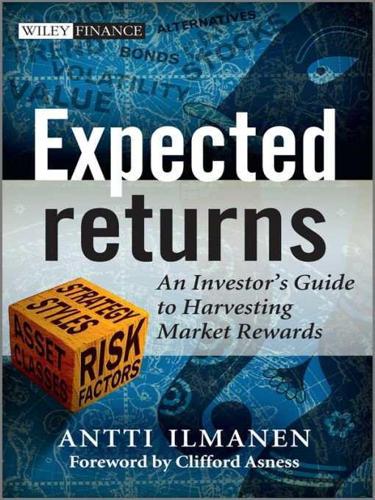
Expected Returns: An Investor's Guide to Harvesting Market Rewards
by
Antti Ilmanen
Published 4 Apr 2011
• The central bank is the backstop that can resist or accommodate inflationary pressures. Improved central bank credibility was one major reason for anchoring long-term inflation expectations. We simply do not know what it takes to unmoor those expectations, what it takes to get the genie back in the bottle if this happens, and if the Fed has the stomach for it. Bond vigilantes worry about the Fed’s priorities and its independence. Even if the unmooring of inflation expectations to the upside is scary, the impact of global deflation, if it occurs, is even worse. Debt deflation and hyperinflation are the worst destroyers of wealth. Most policymakers now fear the former more than the latter, which makes inflation (though not hyperinflation) the more likely medium-term outcome.
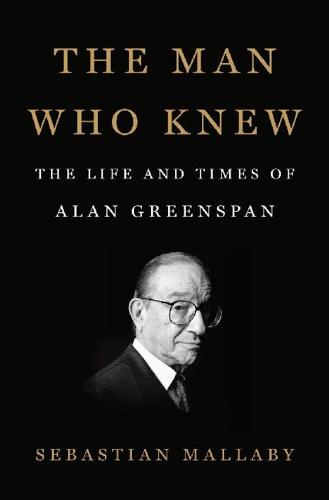
The Man Who Knew: The Life and Times of Alan Greenspan
by
Sebastian Mallaby
Published 10 Oct 2016
On December 18, 1980, Greenspan dined with Stockman and several senior Republicans at the Century Club in Manhattan. Stockman had spent the day trying to sell Reaganomics to Wall Street, and had met with a skeptical reception. Spooked by the supply-siders, investors anticipated big deficits; to compensate for the consequent inflation, they were driving up interest rates on bonds. Stockman promised the bond vigilantes that Reagan’s tax reduction would be offset by commensurate reductions in spending. “The tax cut has to be earned through the sweat of the politicians,” he promised.6 The reaction from the other diners at the Century Club showed what Stockman was up against. “The Street’s delirious!” snarled Jude Wanniski, one of Jack Kemp’s tax-cutting allies.